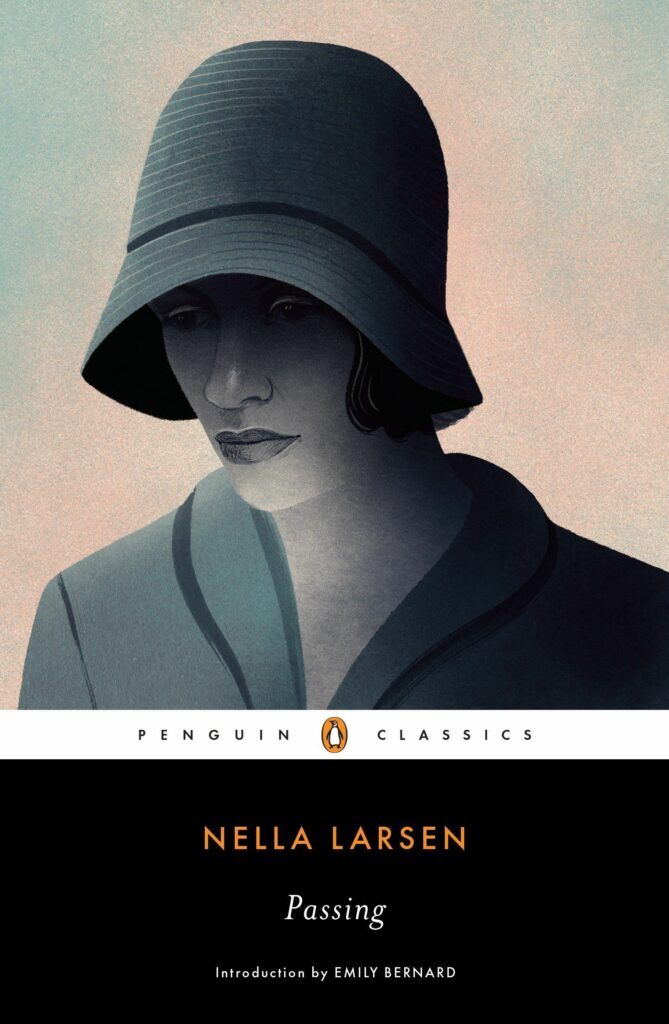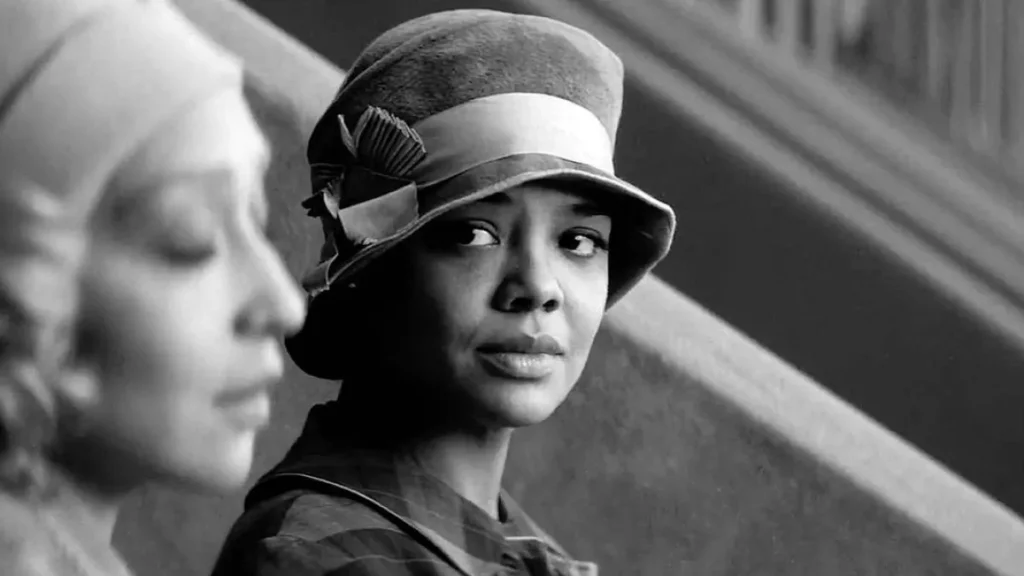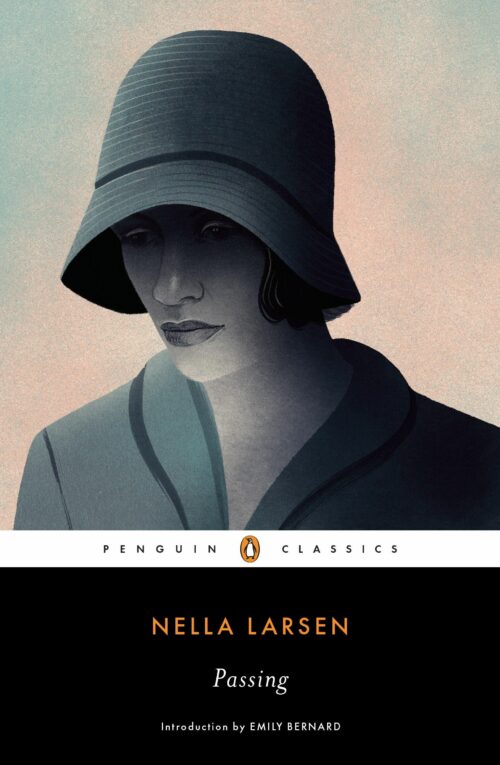In Nella Larsen’s brief but drama-filled novel, Passing, we witness the development of a complicated relationship between the main characters Irene and Clare. This development occurs over the course of multiple encounters, reencounters, and surprise visits between these two women. Within each of the two characters’ interactions, we see a range of emotions. The novel focuses mainly on Irene’s internal thoughts towards Clare as well as her opinions regarding Clare’s life choices. Larsen manipulates language in a very intentional way, using literary devices such as ambiguity and foreshadowing, to subtly prepare readers for the sudden, and quite shocking, ending: Clare’s death. These are just two of the primary tools that she uses to convey meaning and intense emotion within the text. I would argue that only through reading the novel a second time, with the knowledge of how the story ends, can readers begin to pick up on these allusions throughout the text.
Ambiguity is a literary device commonly used throughout the novel Passing. There is ambiguity in the title, in the interactions between characters, and, eventually, in the death scene of Clare Kendry/Bellew. The title, “Passing,” contains various meanings including a more literal one, which is: a person of color socially passing as someone who is white. However, the title could also refer to the moments throughout the text when feelings of anger and frustration, emanating from Irene in particular, “pass” as polite interactions. Clare’s ambiguous death serves as both the ending of the novel and the beginning of a puzzling whodunit for invested readers. We cannot be completely certain of who killed her, whether it was Irene, Clare’s husband John Bellew, or Clare herself who pushed her out the window. Popular belief and understanding of the novel point us in the direction of Irene, who is seemingly in love with Clare. Throughout the novel, we see the incredibly complex nature of Clare and Irene’s relationship. From childhood friends, to strangers, to adult acquaintances, we witness their relationship shift. There is a sense of heavy tension that is present between these two characters, tension that manifests itself into love, hatred, feelings of betrayal, and many other complicated emotions.
From the beginning, there is underlying tension between Clare and Irene due to Clare’s having left the Black community behind. She has rid herself of her Black identity in the way that she lives her life and the way that she presents herself not only to the world, but also to her family: as a white woman. For Irene, Clare’s passing as a lifestyle is a difficult concept to grapple with. She harbors anger towards her old friend for her choices. But there is irony in Irene’s frustration, because Irene, too, willingly passes. Irene, in contrast to Clare, is very unapologetically proud of her Black identity. This quality of her character’s personality is apparent when she, Gertrude (another old friend), and Clare are talking about their children. Irene is not ashamed of or worried about having a dark child, rather she is proud of this: “Irene, whose head had gone up with a quick little jerk, now said in a voice of whose even tones she was proud: ‘One of my boys is dark.’” (Larsen 27) Despite her efforts to project the image that she takes immense pride in her Black identity, she also passes it situations where doing so works in her favor.
Irene harbors clear resentment toward Clare for a number of reasons but, arguably, this is because she also possesses romantic love for her and knows she cannot have her. Consistently throughout the novel, Irene refers to Clare’s features, specifically her laugh and her mouth in a very detailed, and intimate way. An example of this appears when she says “The woman laughed, a lovely laugh, a small sequence of notes that was like a trill and also like the ringing of a delicate bell fashioned of a precious metal, a tinkling.” (Larsen 19) Here she compares Clare’s laugh to the musicality of a ringing bell. I would argue that the details Irene notices within Clare are the kinds of details one would only notice when they possess deep, romantic feelings for another person. And these strong feelings, in combination with not being able to freely express love for someone that they are infatuated with, could drive them to murder.
Foreshadowing is another literary tool that points us in the direction of Irene as the culprit. Allusions to the violent ending of the novel are apparent even at the very beginning before Clare and Irene officially “encounter” one another. Irene’s internal thoughts are one of the guiding forces of the novel as a whole. When she sees Clare at the Drayton or, rather, when Clare sees her and continues to stare in her direction, Irene thinks to herself: “Nevertheless, Irene felt, in turn, anger, scorn, and fear slide over her” (Larsen 17). We see her anger towards Clare reappear when she receives a letter from her later on in the novel: “Laying it aside she regarded with an astonishment that had in it a mild degree of amusement the violence of feelings which it stirred in her,” (Larsen 51). The words “violence,” “anger,” and “scorn,” in these two quotes highlight aggressive feelings that Irene feels towards Clare.
Towards the end of the novel, Irene begins to feel plagued by guilt, particularly in the last chapter, for not telling Clare or her husband Brian about her interaction with John Bellew. She runs into him walking through town while linking arms with her friend Felise, who cannot pass as white. At this moment, John realizes that Irene is a black woman and this encounter likely contributes to John finding out that Clare is indeed Black. “During the process, she wondered, for the hundredth time, why she hadn’t told Brian about herself and Felise running into Bellew the day before, and for the hundredth time she turned away from acknowledging to herself the real reason for keeping back the information,” (Larsen 110). This all-consuming guilt that Irene feels about the situation could further contribute to her motive for killing Clare. The worry that she feels that John will hurt Clare or their daughter Marjorie drives her to kill Clare, so that HE cannot hurt her.
There is also significant foreshadowing in the moments leading up to Clare’s untimely death. Irene, Brian, and Clare all attend the “Negro Welfare League” dance and throughout the night, Irene keeps to herself, continuing to think about her decision to hide her encounter with Bellew from Clare and Brian. Later on in the night, she drops a cigarette out of the window that Clare will eventually fall from: “Irene finished her cigarette and threw it out, watching the tiny spark drop slowly down the white ground below,” (Larsen 115). At this moment in the text, Irene could very well be envisioning Clare’s impending fall from that very window. Moments later, Bellew angrily bursts in on the event and Clare finds herself near the window. We hear more of Irene’s suspicious internal dialogue as she thinks to herself: “She seemed unaware of any danger or uncaring. There was even a faint smile on her full, red lips, and in her shining eyes. It was a smile that maddened Irene. She ran across the room, her terror tinged with ferocity and laid a hand on Clare’s bare arm,” (Larsen 116). In this statement, Irene’s persistent anger towards Clare reappears, this is significant because she is having these thoughts just moments before Clare falls. She also makes physical contact with Clare which alludes to her giving the final push.
Furthermore, the aftermath of Clare’s fall and Irene’s reaction to the situation provide more evidence of her having pushed Clare. Her internal dialogue indicates that she is overthinking her every action: “Her thoughts raced. Ought she to have stayed? Should she go back out there to them? But there would be questions. She hadn’t thought of them, of afterwards, of this. She had thought of nothing in that sudden moment of action,” (Larsen 117). These thoughts imply not only a sense of guilt but also a fear of being recognized as guilty, which provides further evidence that Irene did push Clare. Yet, nothing in this scene is explicitly stated. Much like many other elements of this book, Clare’s death scene is ambiguous. There is no way of knowing, with certainty, that Irene killed Clare. Inference is the only tool that we can use to find an answer, and, even then, the answer is somewhat subjective. However, I think the open ended nature of this book is very intentional. It encourages readers to think and question the structure of things. Considering the political and social climate of the United States during the time period in which this novel was written, reflection and change with regards to racial injustices were urgently necessary. This reflection is a tool that is still relevant to this day, as racial inequities are ever present. But, through reading and education, we can continue to confront and combat these issues. The reality of the situation is that Clare should never have felt like she needed to “pass” in the first place. In a perfect world, she wouldn’t have a perceived notion that passing as white is the only way for her to live a successful, happy life.


“It’s funny about ‘passing.’ We disapprove of it and at the same time condone it. It excites our contempt and yet we rather admire it. We shy away from it with an odd kind of revulsion, but we protect it.”
― Nella Larsen, Passing


Here are two illustrations I created for my visual essay where I included excerpts from Passing to talk about larger ideas across texts. These images are representative of the imagery from those excerpts.
